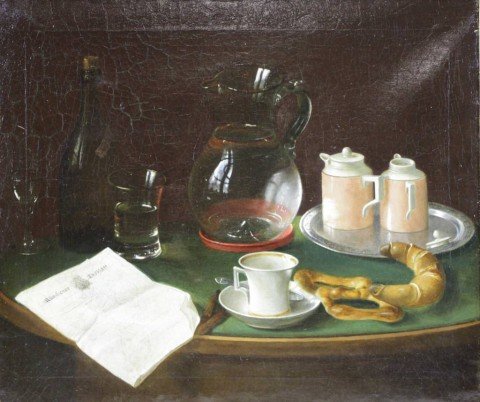Born in Germany of American parents, Charles Meurer became the last living link to the heyday of the trompe l'oeil painting style. He settled in Terrace Park, Ohio, a suburb of Cincinnati, and maintained a studio there for many years. He continued to paint after both of his legs were amputated, asserting that he still had his brushes and his spirit. Many of his trompe l'oeil works have reproductions of money, and he has also done painting with hunting motifs that are similar to work by Michael Harnett, the man credited with founding the trompe l'oeil style in America.
Meurer was raised in Clarksville, Tennessee. In his youth as a beginning artist, he was commissioned by Adolph Ochs, editor of the Chattanooga Times newspaper to paint a still life incorporating the front page of the paper with a figure surrounded by books and other objects of editorial wisdom. Meurer succeeded and used this theme in many subsequent paintings.
This mode of still life painting was later described as editorial-sanctum still life, something that emphasizes with appropriate objects authority (books), industry (pen and inkwell) and respectability (money). Many journalism offices today have paintings or copies of them with that motif.
Meurer studied art with Frank Duveneck in Cincinnati and then went to Paris and Lyon for further study in France. In 1886, according to his telling, he was converted to trompe l'oeil painting when he saw the work of Michael Harnett at the Cincinnati Industrial Exposition of 1886. He also recalled seeing rack pictures of John Frederick Peto in Cincinnati art galleries in the 1890s.

